CONTRIBUTED BY CAROLYN SCHAAB
Buying milk in a Japanese grocery store can be intimidating if you have never done it before. Many of you may have noticed already that Google translate does not always translate in a meaningful way or can be confusing. You may have also noticed that milk is labeled and categorized a bit differently than in the U.S. So, here are a few tips for getting started and deciphering what is available in your local stores.
What types of milk are available in Okinawa? Let’s start with the basic three categories:
- “Regular” milk 牛乳 (gyuunyuu): This is milk that does not have additives or non-milk product.
- Processed milk 加工乳 (kakou nyuu): Milk that has been modified.
- Milk beverage 乳飲料 (nyuu inryou): Typically contains additives, such as vitamins or calcium.
We will discuss ingredients in more detail in a bit to help you better understand the three types.
From here, you are probably most interested in the fat content: 乳脂肪 (nyuu shibou).
- Whole milk will show a milk fat content of about 3.5% to 4 %. You might see this on the label, meaning the components are not adjusted: 成分無調整.
- Reduced or low fat milk 低脂肪 (tei shibou) is typically about 1.5%, but you will see little more or a little less available in stores as well.
- Nonfat milk無脂肪 (mu shibou) is less than 0.5%.
Now let’s take a look at some other kanji you will notice on the carton:
生 (nama): This translates loosely to “raw.” However, here the term “raw milk” means something different. Milk in Japan has strict regulations, so it is very unlikely you will ever see raw, unpasteurized milk here. Instead, this means raw milk was used as an ingredient and then pasteurized. I like to look for 100%生牛乳 on my cartons of milk. This means it is 100% raw milk use before pasteurization, no additives, no milk powders, etc. Just my preference, however, I will note it is typically whole milk (not low fat or nonfat) and more expensive. There is one brand of low fat (1.5%) 100%生牛乳 that I have seen, pictured below, but it rings in at ~250円 which means I often opt for whole milk as it is normally less expensive.
低温殺菌: low-temperature pasteurized. The carton will also label at what temperature (in Celsius) it has been pasteurized.
Hold on, what about organic? Sorry, I have not seen it in Okinawa regular milk, but there is organic soymilk. Look for the kanji 有機and the JAS symbol when looking for organic products. Perhaps the Parus Organic Store or Green Leaf carries some, but I have yet to see it in a regular grocery store in Okinawa.
Another type of milk you may have heard about is EM milk. EM is effective microorganisms. This milk is a popular favorite among those looking for something similar to organic milk. It is whole milk, 100%生牛乳! EM milk will have “EM” labeled in large letters on the carton, making it easy to identify; no difficult kanji to remember here. Do some online reading if you are interested in EM products and see what sort of benefits it can give you.
Now that you are standing in front of rows of milk cartons, desperately trying to match up the kanji that I have bombarded you with, let’s get onto reading the ingredients and verifying what you want to purchase! This will also help you understand the differences between the aforementioned milks. Let’s practice reading a label; I will start with a reasonably priced non-fat Meiji brand:
Look next to the kanji 原材料名located on the side of the carton for ingredients and nutrition information:
乳製品 dairy product
脱脂粉乳 nonfat dry milk powder
乳化剤 emulsifier
炭酸カルシウム calcium carbonate
セルロース cellulose
pH調整剤 pH adjuster
カルシウム calcium (also ミルクカルシウム)
鉄 iron
ビタミンvitamin
Ready for another one? This is one of my least favorites, to be honest…
Here is another hint to help you identify whole milk quickly and easily: a half-moon shaped notch at the top of any cartons. This helps visually-impaired persons recognize whole milk easily.
Okay, well just in case this is not enough information for you, what types of specialty milk are there?
おなかにやさしい(onaka ni yasashii): This indicates reduced lactose milk. This literally translates to “easy on the stomach.” I know of two brands of reduced lactose milk here in Okinawa. アカディ(Akadei by MegSnow) andデーリィDairy brand. They are both 80% reduced lactose so it is easier on the stomach. There is no 100% lactose-free milk out in town. If someone finds it… make sure to post it; there are always a few folks looking for it.
豆乳(tounyuu): This is soymilk; you will see it everywhere and in every flavor. Below is just one of the many brands you will notice in the store. Honestly, this is a whole other article waiting to happen, so I won’t go into details here…
 アルマンドミルク(arumando miruku): almond milk. Small cartons are available in Glica and Almond Breeze brands, typically in the 100円range. These can also come in various flavors. Kaldi carries a shelf-stable larger carton (I think imported from Europe somewhere), but it is 600円 and probably not how much you want to spend unless you are truly desperate.
アルマンドミルク(arumando miruku): almond milk. Small cartons are available in Glica and Almond Breeze brands, typically in the 100円range. These can also come in various flavors. Kaldi carries a shelf-stable larger carton (I think imported from Europe somewhere), but it is 600円 and probably not how much you want to spend unless you are truly desperate.
Okay, now you should be brimming with confidence on your ability to buy the milk you desire; it is time to use your new skills out and about in the grocery store. Ganbatte がんばって!
Bonus tip: This guide to buying food in Japan is a handy resource for grocery shopping in Okinawa. (No, I did not write it, but it is really quite useful for first starting out!)


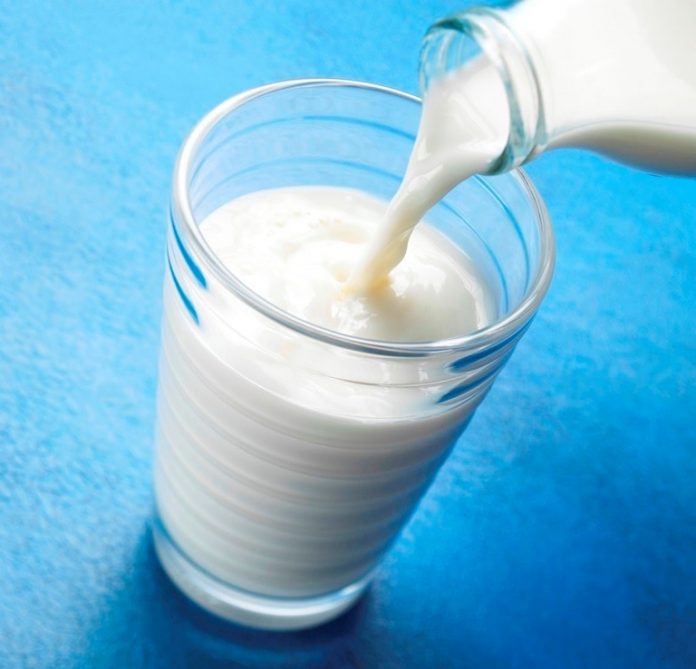
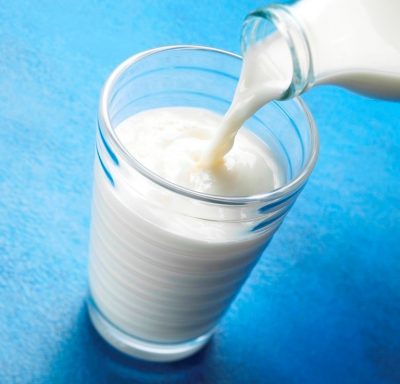
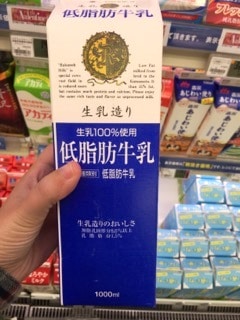
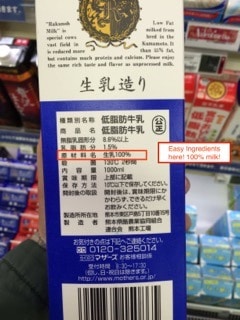

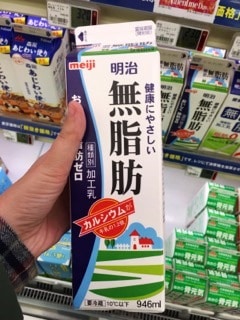
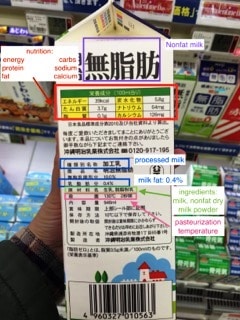

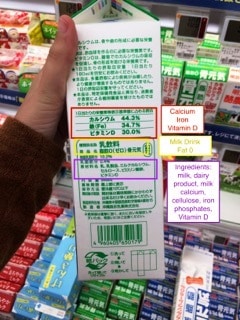
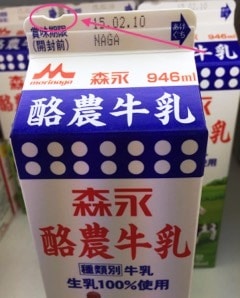
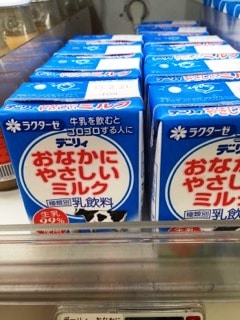
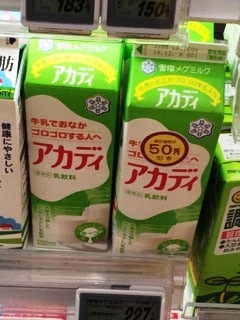
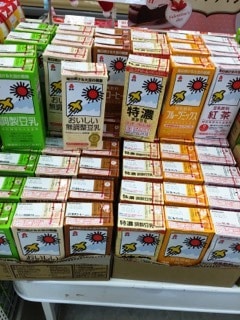
Hi Carolyn,
I am bringing 2 toddlers to Okinawa and UHT milk would be a lot more convenient since I don’t have to keep it cold . Is that found readily in convenience stores and I can buy like packs of 6 to bring around? Thanks!
What brand of milk do you like?
There are 2 types of milk I typically buy, depending on what I will be using it for the week. For nonfat milk, I go with the very reasonably priced Meiji milk pictured above, it is 加工乳 so it has milk powders added, but no non-milk additives (so no cellulose, emulsifier, etc). My husband much prefers whole milk, so I often buy the EM milk mentioned above (no picture, sorry, but it says EM in very large letters on the carton). It is from Okinawa and very good, 100% milk, not processed. These are my preferences. I personally stay away from 乳飲料 “milk beverage” since it does not appeal to me, but I know several people who like it, so it personal preference (as I mentioned, they also contain extra vitamins, iron, calcium, etc, but can contain cellulose, emulsifier, etc in the ingredients).
low fat (1.5%) 100%生牛乳, the one in the picture with the gold seal type image on it, but I haven’t seen it in San-A recently. I’m hoping they’re just sold out, keeping my fingers crossed!
Carolyn, have you seen any kefir yogurt beverage in grocery stores? I know one can buy kefir grains/starters, but that’s one more thing I would rather not have to make myself.
I have not seen any, but I know it exists on mainland Japan, just not sure on Okinawa. With the increase in health food and organic stores in Okinawa, I would not be surprised to see it soon.
Novia, I am looking for some kefir grains here in Okinawa. I saw you said they could be acquired here and was hoping you would share the location. TY!!
Mike
Carolyn – What about half and half? Is there such a thing in Japan? I prefer it in coffee, but have trouble deciphering what it may look like in stores.
half and half is not sold in Japan… this is an American/Canadian thing I believe. Sorry…
That’s a fact. It’s easy enough to make from cream and whole milk. Just use equal parts and it comes very close to what you’re used to.
Great article!